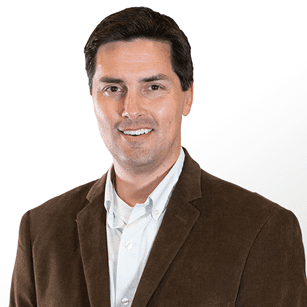- Solutions
- Solutions
- Home Health
- Hospice
- Life Plan Community
- Palliative Care
- Private Duty
- Senior Living
- Skilled Nursing
- Skilled Nursing
- Skilled Nursing Software
- Advanced Insights
- Customer relationship management
- Data and analytics
- Financial & operations management
- Marketing
- Nutrition management
- Referral management
- Regulatory compliance
- Retail management
- Resident engagement
- Revenue cycle management
- Skilled nursing interoperability
- Partners
- Blogs
- Resources
- About
- User Conference

3 Challenges to overcome when diversifying with SNF at-home services
There are many positive factors working in the favor of skilled nursing providers who choose to integrate home health services, as we’ve seen in part 1 and part 2 of this series. Yet it’s also important to understand that, in order to successfully make the shift to SNF at home, there are some challenges that facilities may need to overcome.
For most skilled nursing providers, these issues can’t be ignored, but must be confronted directly to ensure program success, and to see the increase in patient satisfaction that usually comes with it. With that in mind, let’s take a few minutes to better understand the nature of these challenges to SNF at home, and explore some ways to overcome them.
Diversifying with SNF at-home programs: 3 Key challenges
So, what are the challenges facing skilled nursing organizations seeking to seize the benefits of integrating home health services into SNF at-home programs? The most urgent include:
- Shortages in the clinical workforce
- Community-related obstacles and social determinants of health
- The compatibility and accessibility of care transition data
Challenge #1: Workforce shortages
Even with the many factors in favor of moving care to the home, there are also a few serious challenges to overcome by SNF at-home programs. And the first and perhaps most urgent of these is the ongoing workforce shortage. Finding skilled workers is a difficulty against which few organizations have immunity today — and healthcare is probably the most impacted industry.
You hear a lot about not having enough staff in nursing homes. But staff is also hard to find in home care settings, too, with home health aides particularly difficult to source since the Covid-19 pandemic first struck more than two years ago. And with America’s elderly population expected to double by 2050, it’s a problem that’s only going to get worse.
Organizations looking to meet this challenge have few options. A lot of the agencies that providers depend upon have become very costly. Some are exploring offshore models. But it takes time to navigate all of the immigration laws, language barriers, remote training, and other natural challenges and barriers to entry of this tactic.
So, finding the workers needed to extend care into the home can be an issue. As with so many other aspects of at-home care, though, technology can help. At MatrixCare, one of the reasons we believe technology is so important is that it enables organizations to do more with fewer workers, helping businesses potentially offset the effects of the worker shortage.
Challenge #2: Community support and social determinants
Lack of widespread community support can be another challenge facing providers looking to add home health to their lines of service. Depending on where a facility operates, it may require some extra effort to secure the support needed from the community to make a SNF at-home project successful.
Luckily, we now understand the role of community in healthcare better than in the past. Social determinants of health, or the environments in which people live, directly affect access to care (and the quality thereof). Some communities don’t have access to pharmacies or healthy food, for instance. Transportation scarcity and crime can also be deterrents.
Offering SNF at-home services may help offset this challenge by appealing to local family caregivers. People caring for a family member at home may love the idea of getting some kind of professional assistance without having to transfer that loved one to a facility. By offering the tools and support they need to continue to provide at-home care, community resistance can be overcome, while opening up opportunities to bring on new residents.
After all, for the healthcare system to work, every element needs to be in place — the family as well as the hospitals, ambulances, rescue squad services, and so on. And this means a facility needs to successfully operate within the network of community services.
As I discussed in part 2, the U.S. government is working to offset this challenge by promoting community-based services and financially incentivizing at-home care. These initiatives, which have broad bipartisan support, could be game changers for patients and providers. And promoting a community focus around senior care is especially important for the elderly, whose numbers continue to grow at a higher rate than other age groups.
Challenge #3: Care transition data
Finally, care transition data can be another serious challenge for organizations that aren’t yet set up for it. Transitioning patients from a facility to an at-home setting means adapting to a different care model. And for some of the things that a skilled nursing provider can offer 24×7, a home health provider may not be set up to handle at all.
For instance, the home health care provider needs all of the crucial data on a patient to deliver the best possible care. This includes not only care history, but also medications, allergies, diet, and even personal preferences. The patient may need a little help taking a bath or a shower, for example. This is critical information, and it’s not always in the medical record — and the patients themselves may not always remember or choose to tell their doctors about it.
The question is, how can providers make sure that whatever has been prescribed to that patient will continue seamlessly and uninterruptedly when they’re moved into the home setting? Who’s going to help with the medication administration, if they need that assistance, for example? Who’s going to ensure the successful transfer of all that vital information in a new SNF at-home program?
As with so many of the challenges to SNF at-home programs, technology is providing the basis for a solution. Being able to take data safely and securely from the EHR, and be able to share that data with the at-home care team, is essential. And thanks to innovators like MatrixCare, it’s a challenge that’s being met with the help of technology.
Request a demo today to learn more about how MatrixCare can help your organization transition to new models of care, including SNF at-home services.
Learn more about how MatrixCare can help your organization transition to new models of care, including SNF at-home services.
See what MatrixCare can do for you
Kevin Whitehurst
Kevin Keith Whitehurst, Senior Vice President, Skilled Nursing Solutions, has been a key player in LTPAC technology since 1990. Whitehurst has held many leadership positions including IT Director for one of the first developers of MDS software systems to, most recently, SVP, Client Services for MatrixCare. In his current role, he is responsible for the success of the Skilled Nursing Solutions Group and oversees Product Management, Professional Services, Sales and Marketing, and Client Support for that group. A 26 year veteran, Whitehurst has dedicated his career to improving Skilled Nursing Providers experience with technology. Whitehurst holds degrees from San Bernardino Valley College and the Los Angeles School of Business and also served in the U.S Air Force.
Related Posts


See MatrixCare in action
Start by having a call with one of our experts to see our platform in action.
MatrixCare offers industry-leading software solutions. Thousands of facility-based and home-based care organizations trust us to help them improve efficiency and provide exceptional care.
© 2025 MatrixCare is a registered trademark of MatrixCare. All rights reserved.






